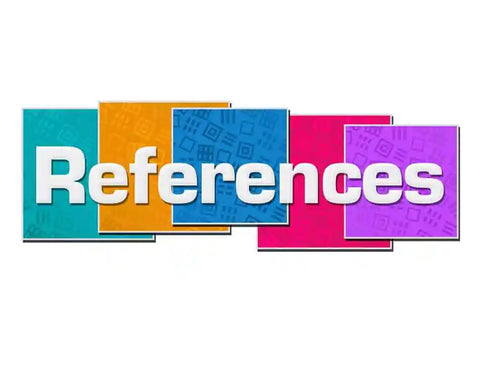學術文獻中嵌入清單的標點符號
清單經常用於學術和科學寫作中,以便以清晰有序的方式向讀者呈現資訊。無論學術作者想要傳達的材料是簡短且相對簡單,還是冗長且極其複雜,有效佈局的清單都可以提高材料的可訪問性和影響力,而以組織良好的列表呈現的材料也會更有趣、更令人難忘。列表可以嵌入學術或科學文獻的正文中,也可以從正文中分離出來顯示。在這兩種情況下,標點符號對於區分各個項目並幫助闡明彼此之間的關係對於成功的清單來說是絕對必要的。
嵌入式清單遵循正常句子結構的規則,當項目不是過於複雜時尤其適用。最簡單的形式是,正確完成句子的連續文字清單不需要特殊標點符號,也不需要數字或字母來標記單一項目,例如「她帶了鋼筆、鉛筆和紙」和「我們的研究重點是抄寫員、旁注和腳本」。在最後一個項目之前的連接詞「and」之前可以使用逗號(如第二個範例)或不使用逗號(如第一個範例),但這應與文件中其他地方的連續逗號的使用模式相符。即使通常不使用連續逗號,當連接詞連接的複合詞出現在列表中的主要連接詞之前時,有時仍可能需要使用逗號以避免歧義。例如,在「她帶了鋼筆、藍色和紅色的墨水,還有鉛筆」中,最後的「和」之前必須有一個連續逗號,以避免暗示「鉛筆」也是「藍色和紅色的」。
如果包含列表的句子的開頭或引導部分沒有自然地引出列表(例如使用動詞或介詞),而是形成獨立子句,則通常使用冒號來引入句子的列表部分,如下例所示。 「這篇論文是團隊合作的成果:大衛負責研究,艾米麗負責分析數據,阿曼達負責起草文本。」如果嵌入列表簡短或非正式,則可以使用破折號(en 規則或 em 規則)代替冒號,如“她帶來了我們需要的東西 - 鋼筆、鉛筆和紙”,但由於破號往往意味著問題外話或事後更好的想法。這兩者當然不應該一起使用,破折號跟在冒號後面,就像它們曾經在學術散文中那樣。
當嵌入清單中的一個(或多個)項目特別長或包含內部逗號時,應使用分號而不是逗號來分隔各個項目。在這種情況下,即使文件中通常不使用連續逗號,也應該在最後一個項目之前的連接詞之前出現分號。我的下一句話提供了一個例子,但具有這種結構的嵌入式清單可能會更長、更複雜。 「這篇論文是團隊合作的成果,每個人都做出了最大的貢獻:大衛設計了方法論,所以他進行了研究;艾米麗已經學習過幾門統計學課程,因此她分析了這些數據;阿曼達正在攻讀英語學位,所以她起草了這篇文章。”
最後,可以將數字或字母添加到嵌入清單中,以實現更清晰的劃分或建立順序或重要性的層次結構。阿拉伯數字(1、2、3 等)比羅馬數字(I、II、III 等)更適合這項任務,羅馬數字在嵌入式清單中會顯得繁瑣,最好避免使用,除非出版商或教師的指導方針要求使用。字母也是合適的,通常以小寫格式出現(a、b、c 等),有時會設定為斜體或粗體字體(儘管這個方面可能不會出現在我的最後一個例子中)。 「我們的研究重點是 (1) 抄寫員、(2) 旁注和 (3) 腳本」或「這篇論文是團隊合作的成果:(a) David 設計了方法論,所以他進行了研究;(b) Emily 修過幾門統計學課程,所以她分析了數據;(c) Amanda 正在攻讀英語學位,所以她正在攻讀文本。
為什麼選擇我們的編輯和校對服務?
在 Proof-Reading-Service.com,我們透過龐大且極其敬業的學術和科學專業團隊提供最高品質的期刊文章編輯、論文校對和線上校對服務。我們所有的校對人員都是英語母語人士,擁有研究生學位,他們的專業領域涵蓋了廣泛的學科,因此我們能夠幫助我們的國際客戶進行研究編輯,以改進和完善各種學術手稿,從而成功出版。我們的稿件編輯和校對團隊中許多經過精心培訓的成員主要負責擬在學術期刊上發表的文章,運用嚴格的期刊編輯標準,確保每篇論文中使用的參考文獻和格式符合期刊對作者的指示,並糾正任何語法、拼寫、標點或簡單的打字錯誤。透過這種方式,我們使客戶能夠以清晰準確的方式報告他們的研究,以打動收購校對員並實現出版。
我們為各種科學期刊論文的作者提供的科學校對服務尤其受歡迎,但我們也提供手稿校對服務,並擁有校對和編輯所有學術學科以及其他學科手稿的經驗和專業知識。我們的團隊成員專門從事醫學校對服務,我們的一些專家專門致力於論文校對和手稿校對,透過最嚴格的博士論文編輯和期刊文章校對實踐,為學者提供提高格式和語言使用能力的機會。無論您是在準備會議論文以供展示,完善進度報告以供與同事分享,還是面臨編輯和完善任何類型學術文獻以供出版的艱鉅任務,我們專業團隊的合格成員都可以提供寶貴的幫助,讓您對您的書面作品更有信心。
如果您正在為學術或科學期刊準備一篇文章,或者計劃在不久的將來實現這一目標,那麼您可能會對一本新書《期刊出版指南》感興趣,該書可在我們的「期刊發表研究成果的技巧和建議」網站上找到。








